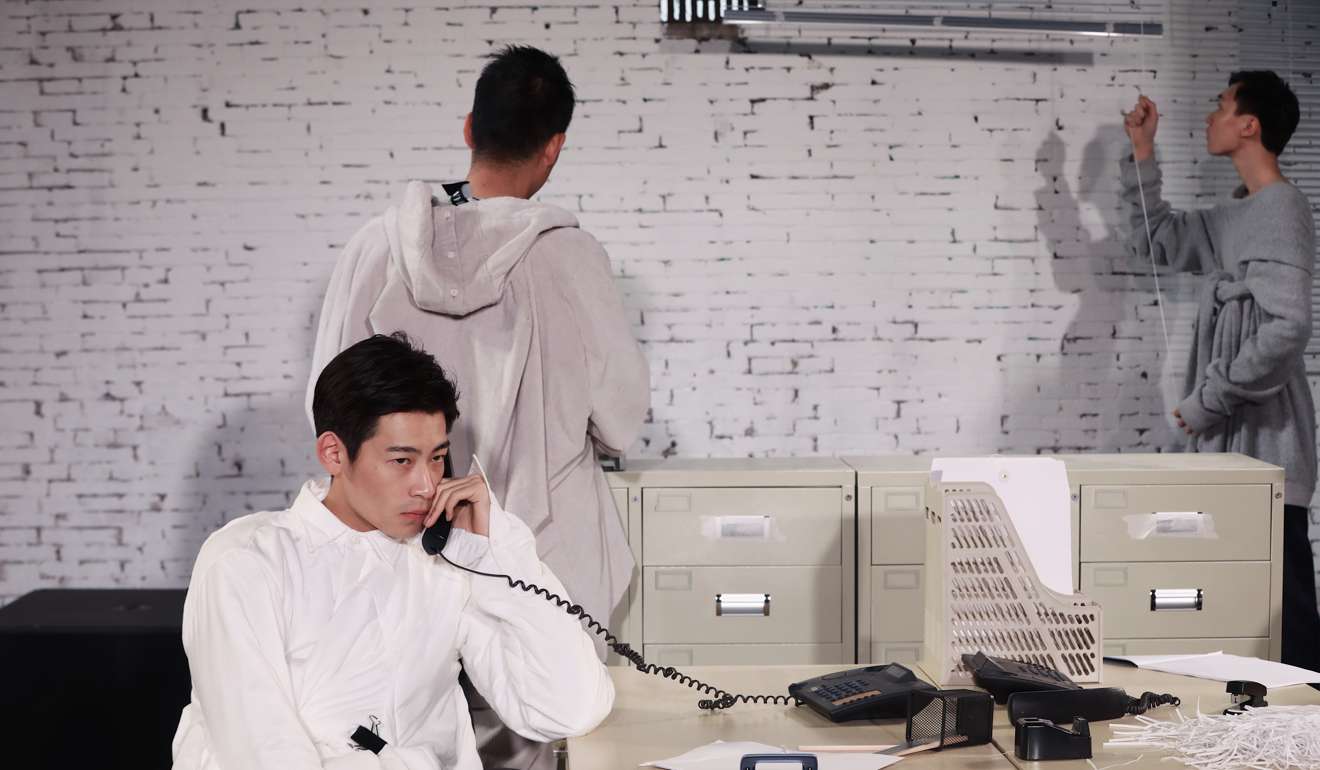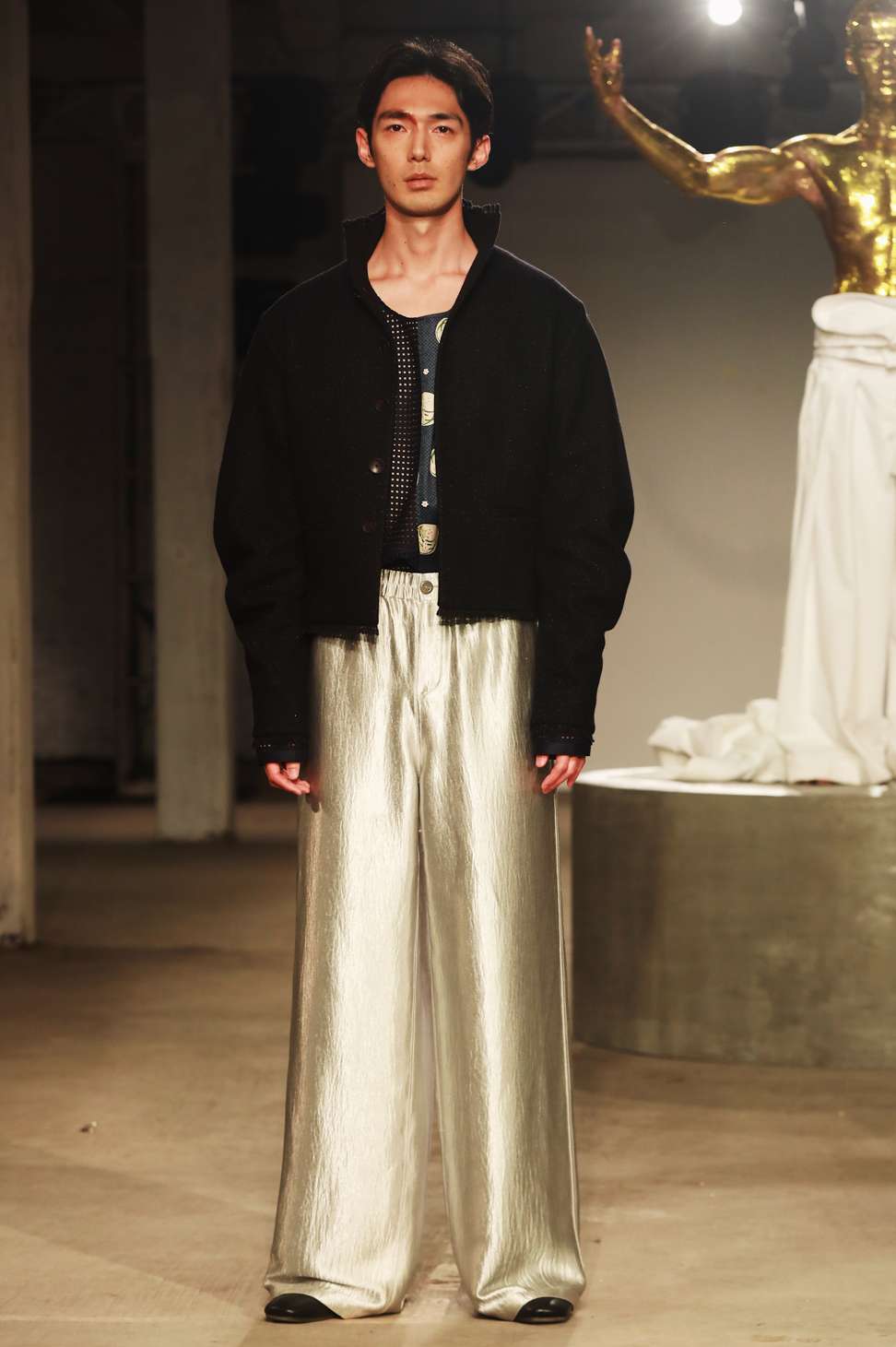
Menswear and unisex styles on the rise at Shanghai Fashion Week
China’s premier fashion event, which featured 85 brands over eight days, has seen menswear designers make particular strides this past week
Only a few years ago, Shanghai Fashion Week was a noticeably feminine affair, not only because the bulk of the designers showing were designing womenswear collections, but also because of a pervasive femininity popular in Chinese fashion at the time.
Today, there are still more womenswear collections on the catwalks, but the menswear designers are growing in number, as are the number of “co-ed” collections featuring both men’s and womenswear.
Menswear designers at Shanghai Fashion Week aren’t just becoming more numerous, they are also making huge strides in creativity and quality.
Men and women in the modern world don’t need to protect the meaning of ‘man’ and ‘woman’ so strictly
“In some ways, the menswear designers are doing better than women’s,” said Cui Dan, fashion director of GQ China, the sponsor of a full day of menswear programming at Labelhood, Shanghai Fashion Week’s sister event, which features the best in China’s emerging independent design scene.
The trend for co-ed shows is being seen at fashion weeks all over the world, with high-profile brands such as Burberry and Gucci choosing to show their men’s and women’s collections together.

A pioneer among the current crop of brands going co-ed was Croatian-born, Milan-based Damir Doma, who was in Shanghai to present his autumn/winter 2017 collection as part of the Shanghai International Fashion Showcase event for international designers.
Doma doesn’t just show men’s and women’s collections at the same time, he openly and freely allows the two collections to mingle, resulting in a more androgynous, unisex aesthetic – something which also feels more pervasive in fashion as a whole in a modern world where gender lines in general have become more fluid.

“When we design, I am trying to push my womenswear and menswear designers to talk to each other and look at each other’s boards. Then I will use one of the men’s pieces in the women’s collection and also the other way. Before, I wanted to be very clear about what is my man and what is my woman, even though I think my strength is the mixing of them both. Now I don’t have a problem doing it,” he said.
Among the standout local menswear brands showing in Shanghai, newcomer Danshan caught the eye of China fashion watchers. The brand’s version of menswear epitomises the modern unisex aesthetic in fluid shapes and soft, silky fabrications – for example in tunics worn to mid-calf with or without wide-leg trousers underneath.

In part, this design direction is explained by the background of Danshan co-founder Danxia Lu, a young woman who was raised as a boy for the first decade of her life by a father keen to give his peers the impression that his only child was a son – a marker of success in China’s traditionally patriarchal society.

Another standout menswear collection came from Zhou Xiaowen’s Hiuman brand, which showed a texturally interesting and soft-sportswear-influenced collection. “Maybe in the details menswear is becoming more like womenswear. Men and women in the modern world don’t need to protect the meaning of ‘man’ and ‘woman’ so strictly,” Zhou said after the presentation.


However, even with the rise of a strong menswear design culture in China, the market for creative and avant-garde men’s fashion is still a niche one.
“It’s tough for menswear because there still aren’t as many buyers. Some buyers are actually buying menswear for women. The quality of the designers is there, but there isn’t a big market of adventurous male dressers,” said Zemira Xu, founder of Tube Showroom.
However, she said this could change with the rise of Chinese millennial consumers.
“The post-’90s generation is very different from previous generations. They are much braver in dressing, they are more international and influenced by global online fashion influencers.”

In spite of the challenges inherent in selling fashion-forward men’s clothing to a majority of Chinese customers today, brands such as Les Hommes – the creative brainchild of Belgian design duo Tom Notte and Bart Vandebosch – which also showed in Shanghai as part of the International Fashion Showcase, feel there are many reasons to be excited about the Chinese market for niche, design-focused menswear.
“It used to be about looking like they are dressed in a ‘right’ way, but they are evolving and they are evolving fast,” Notte said.
Vandebosch said: “There’s a lot happening here because a lot of people are just getting introduced to high fashion and creative fashion. The growth will be able to [continue] for years because there’s so many people who are just discovering fashion and so the potential is huge.”

Equally effusive about the menswear scene in China was menswear designer and contemporary buyer for Britain’s Selfridges department store, Jack Cassidy, who was attending Shanghai Fashion Week for the first time.
His favourite brands of the week included: Staff Only, whose fashion-victim-themed presentation was laid out as a crime scene; and Junwei Lin, a go-to brand for pop idols Kris Wu and Chris Lee.

According to Cassidy, unlike in Tokyo or Seoul, where street style strongly informs the menswear collections and designers work to complete a certain look, emerging Chinese designers are, in some ways, more original in their vision.
“[In Shanghai] things feel more original; some are so original it’s hard to see how the clothes can be worn with other brands we stock, but others are original and a good fit at the same time,” he said.

